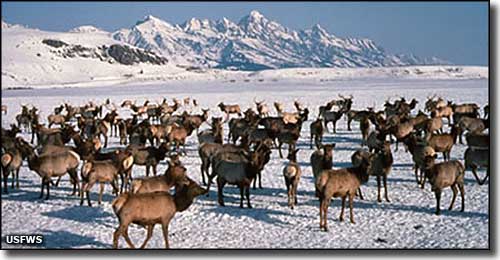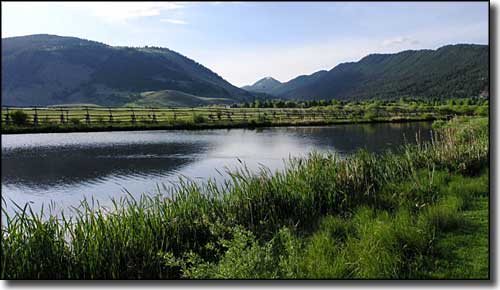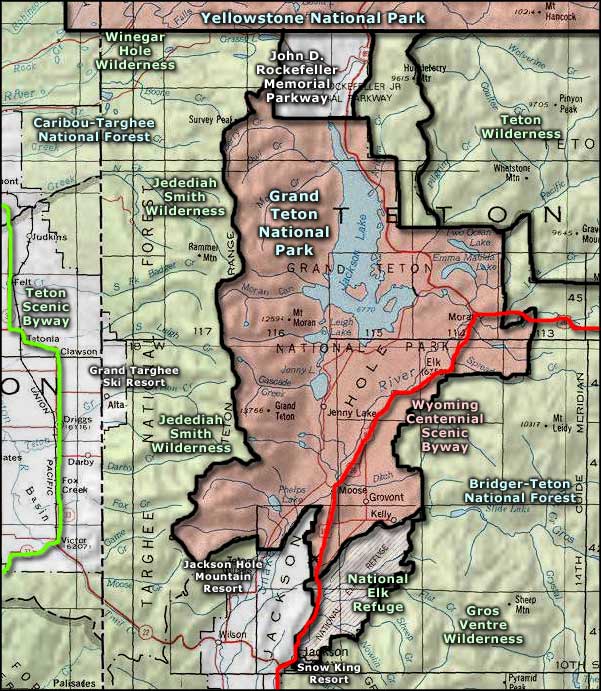
National Elk Refuge

Elk wintering on the National Elk Refuge
Established in 1912 to protect what was then the largest elk herd on Earth, the National Elk Refuge contains almost 25,000 acres with the city of Jackson to the southwest, Grand Teton National Park to the north and the Bridger-Teton National Forest to the east and southeast.
The National Elk Refuge sees about 5,000 elk each winter. They come from as far away as the southern portions of Yellowstone National Park. They used to migrate much further south that this to where the ground is usually snow-free all winter but that migration route was cut off by the growth of the city of Jackson. So the elk we see now are the survivors of a herd that once numbered more than 25,000.
There is a special program at the refuge that allows the Boy Scouts of America to collect the dropped elk antlers every spring and sell thm at auction. 80% of the proceeds on the 10-to-11,000 pounds of antlers collected every year are returned to the refuge to research, manage and feed the elk herd.
Most of the land contained within the refuge is a mix of rock outcroppings and sagebrush along the mountain foothills and meadows and marshes on the valley floor. Sharing the winter range with the elk is a herd of more than 800 Bison, plus numerous pronghorns, mule deer and bighorn sheep. Some 147 species of birds and 47 species of mammals have been documented on the refuge.

Wetlands on the National Elk Refuge

National Elk Refuge area map
Yellowstone National Park - John D. Rockefeller Memorial Parkway
Snow King Ski Resort - Jackson Hole Mountain Resort - Grand Targhee Ski Resort
Bridger-Teton National Forest - Caribou-Targhee National Forest - Teton Wilderness
Gros Ventre Wilderness - Winegar Hole Wilderness - Jedediah Smith Wilderness
Wyoming Centennial Scenic Byway - Teton Scenic Byway
